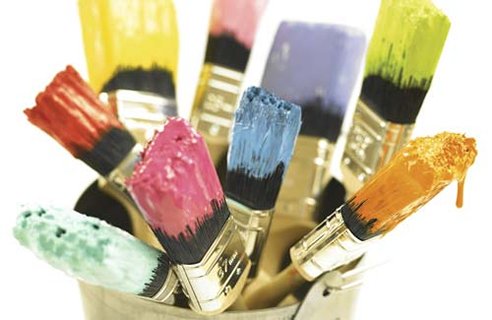Baldwin County Sewer Service is always discouraging people from disposing paint in sinks since it can become greasy and cause sewage system blockages. Also, wastewater containing paint can be hard for treatment plants to fully clean, and therefore, paint chemicals can cause a number of environmental problems, such as harming wildlife in natural waterways.
So, what should homeowners, painters or anyone with a small to large painting project do with leftover paint and paintbrushes? You could dump paint and wash brushes and equipment in the grass, but that would pollute the groundwater, which eventually travels to the nearest waterway. Whether you’re touching up some spots on your walls or painting a whole house, the following tips from Resene.co.nz will ensure you’re protecting the environment.
In the case of water based paints:
- At the end of the job wipe or squeeze excess paint onto an absorbent material such as old rags, shredded newspapers or cardboard boxes.
- Allow to dry and dispose of with household waste.
- Wash brushes, rollers and other equipment with water in a 20 litre or similar sized container.
- The most effective method is to use a roller spinner.
- Transfer the washed equipment to a second container filled with clean water for a final rinse.
- Place lids on the containers or cover in some other secure manner and allow to stand overnight.
By morning the paint solids in the first container will have settled down to the bottom of the container. The clear water from this container may now be poured onto the garden or any grassed or open area away from streams, rivers or lakes, where it can be absorbed into the ground.
Now to dispose of the paint solids at the bottom of the first container.
Scrape the paint solids out onto absorbent material such as old rags, shredded newspapers or cardboard boxes. Allow to dry, then place in a plastic bag and dispose of with the household rubbish or take directly to the nearest council tip.
The second container now can be used as the first wash. Use this rotation system until the job is completed.
In the case of solvent based paints, follow the same procedures as for water based paints but with these exceptions:
- Use solvents to wash equipment.
- Allow the first container to stand at least 24 hours as it will take this long for the paint solids to settle.
- Do not pour the clear solvent onto the ground – use it to top up the second container or decant and keep for future use.
- Use the least amount of solvent.
Read further instructions here.


